Scaffolding Rental Woodbridge
Find top Scaffolding Hire in Woodbridge
Receive up to 3 Scaffolding Hire quotes for your project today! Compare profiles, reviews, accreditations, portfolio, etc... and choose the best deal.
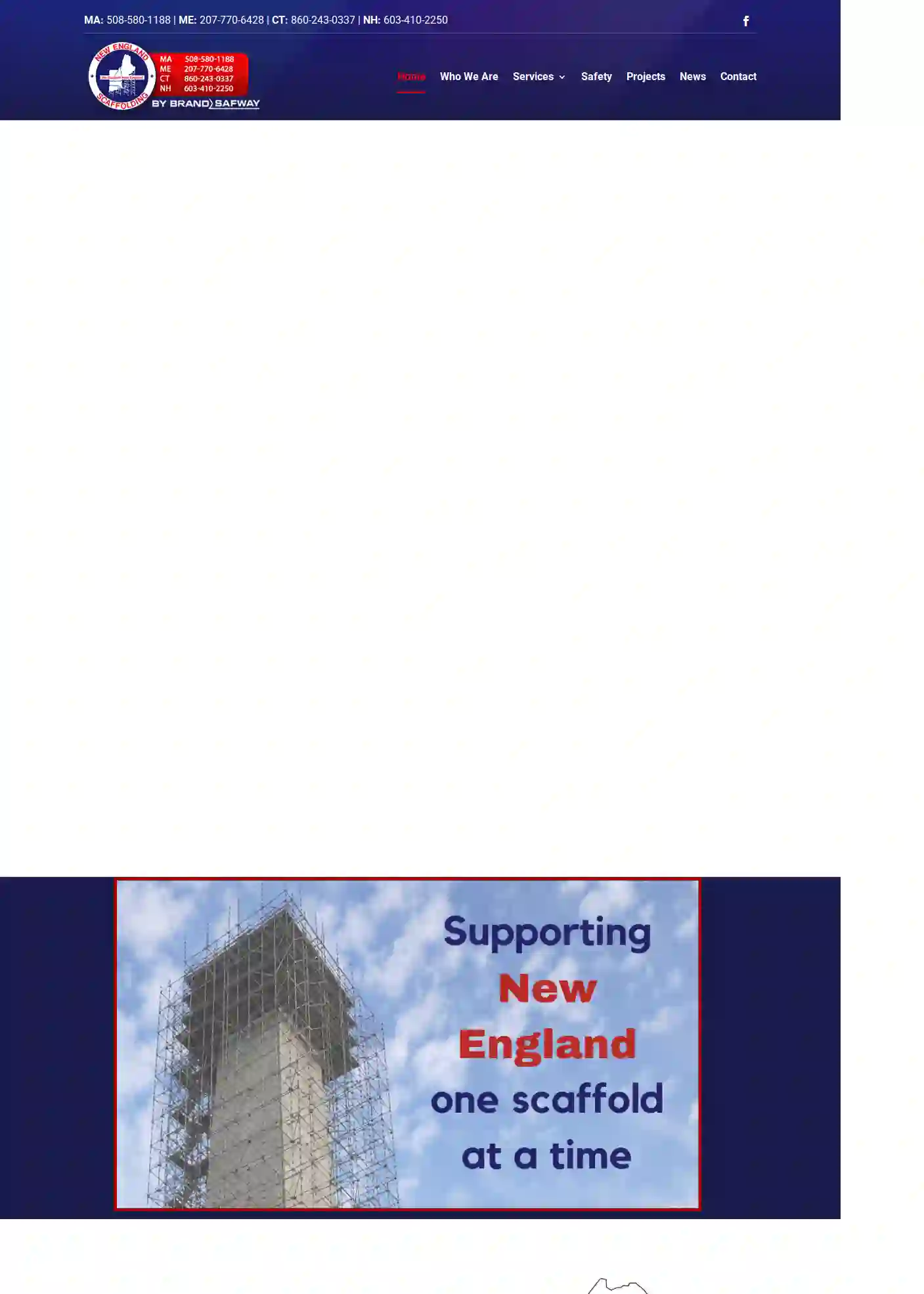
New England Scaffolding
2.54 reviewsNorwell, MA, 412 R Washington St, 02061, USNew England Scaffolding is a leading provider of scaffolding solutions, offering a range of services including scaffolding, shoring, suspended scaffolding, containment, temporary fencing, and debris chutes. With offices in Massachusetts, Maine, Connecticut, and New Hampshire, they prioritize safety and customer satisfaction. Their team of experienced professionals ensures that projects are completed efficiently and effectively, adhering to the highest safety standards. New England Scaffolding is dedicated to delivering top-quality services and building long-lasting relationships with clients.
- Services
- Why Us?
- Accreditations
- Our Team
- Testimonials
- Gallery
Get Quote
Nutmeg Scaffold & Ladder Co
4.97 reviewsWilton, CT, 743 Danbury Road, 06897, USNutmeg Scaffold is a leading provider of scaffolding rental and sales services in Connecticut, serving Fairfield County for over 50 years. With a wide range of commercial-quality products, they aim to provide the contractor community with top-of-the-line scaffolding solutions. Their staff can help calculate the required scaffolding for any project and deliver it to the job site, ensuring maximum efficiency and safety. Nutmeg Scaffold offers various services including scaffolding rental, pump jack sales and rental, and scaffolding in use. They prioritize safety and environmental consciousness, recommending the use of scaffolding stair towers for upper-level entry and promoting eco-friendly practices.
- Services
- Why Us?
- Accreditations
- Our Team
- Testimonials
- Gallery
Get Quote
SafwayAtlantic by BrandSafway – New Jersey
4.423 reviews123 Main St, Newark, 07001, USSafway Atlantic by BrandSafway New Jersey is a leading provider of scaffolding solutions, offering a wide range of services including scaffolding rental, scaffolding installation, and scaffolding safety training. With a strong commitment to safety and customer satisfaction, the team at Safway Atlantic by BrandSafway New Jersey strives to provide top-notch service and support to clients across various industries.
- Services
- Why Us?
- Accreditations
- Our Team
- Testimonials
Get Quote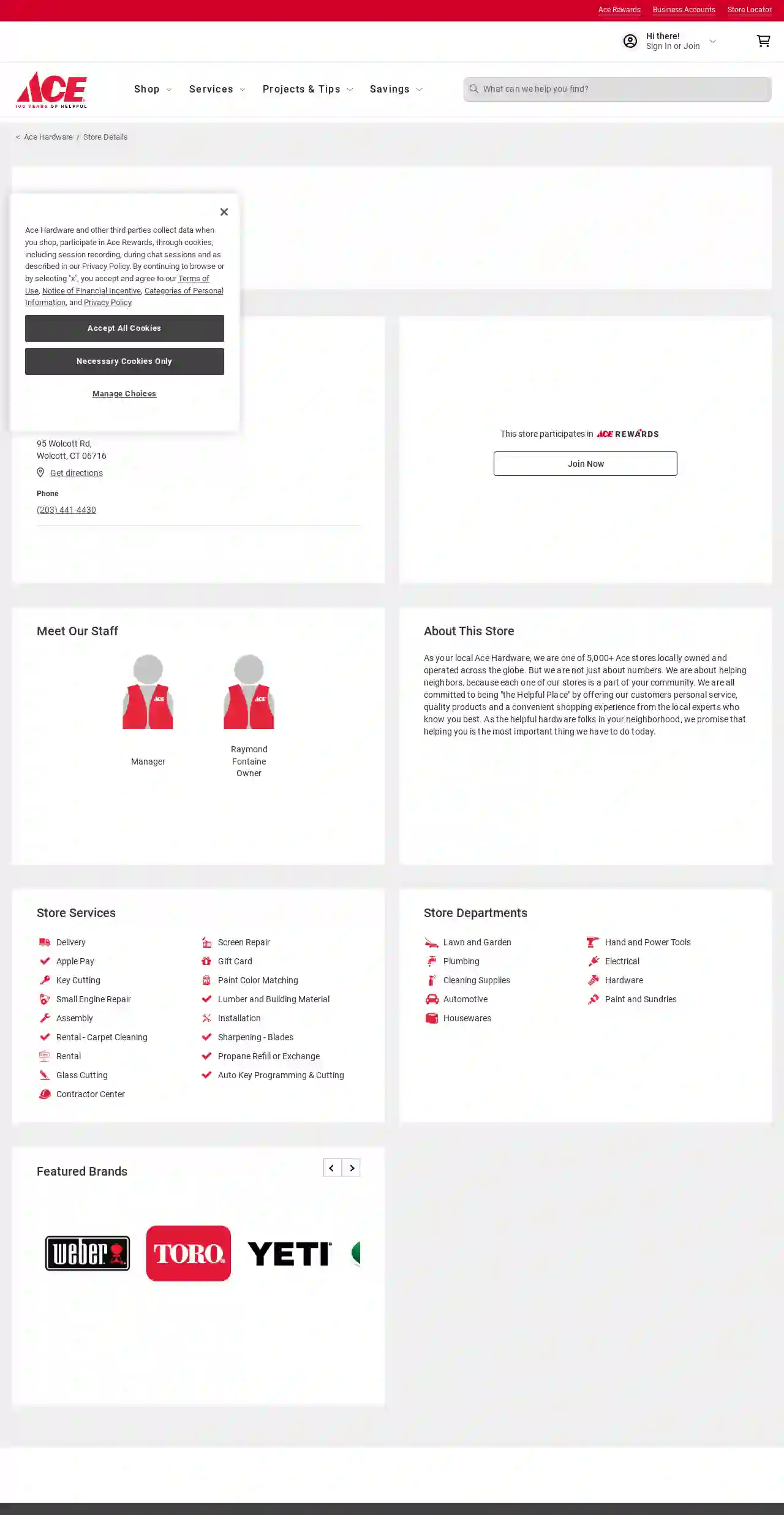
Ace Hardware of Wolcott
4.567 reviews95 Wolcott Rd, Wolcott, 06716, USAs your local Ace Hardware, we are one of 5,000+ Ace stores locally owned and operated across the globe. But we are not just about numbers. We are about helping neighbors, because each one of our stores is a part of your community. We are all committed to being "the Helpful Place" by offering our customers personal service, quality products and a convenient shopping experience from the local experts who know you best. As the helpful hardware folks in your neighborhood, we promise that helping you is the most important thing we have to do today.
- Services
- Why Us?
- Accreditations
- Our Team
- Gallery
Get Quote
Unique Scaffolding Systems, LLC
4.37 reviews808 Fairfield Avenue, Kenilworth, 07033, USAt Unique Scaffolding Systems, we have the highest standards in the industry with reliability, consistent high quality workmanship, competitive prices, and high regard for safety. We are fully insured, fully trained and OSHA compliant. We consistently exceed customer expectations. We specialize in all aspects of scaffolding including systems scaffold, heavy duty side walk bridges, stair towers and shoring. We also offer hoists, netting, enclosures, and more. We are a NJ-based, owner-operated, scaffold erecting and dismantling contractor doing business in the tri-state area since 2008. We will provide an access solution to any project, including commercial buildings, schools, churches, municipal projects, water tank towers and refineries. We also specialize in scaffolding for the restoration of landmark-designated historic buildings and structures. We are available 24 hours a day, 7 days a week. Engineered drawings are available for any project, no matter how simple or complex.
- Services
- Why Us?
- Gallery
Get Quote
R&R Scaffolding, Ltd.
4.69 reviews333 SE 2nd Ave, Miami, 33131, USR&R Companies have been pioneers and innovators in the suspended scaffold industry for nearly four decades. We deliver services and products ranging from the simplest solutions to the most complex systems. Our primary markets include commercial, industrial, institutional, and residential sectors. Our diverse portfolio of brands and extensive capabilities have transformed us into the multifaceted company we are today.
- Services
- Why Us?
- Accreditations
- Gallery
Get Quote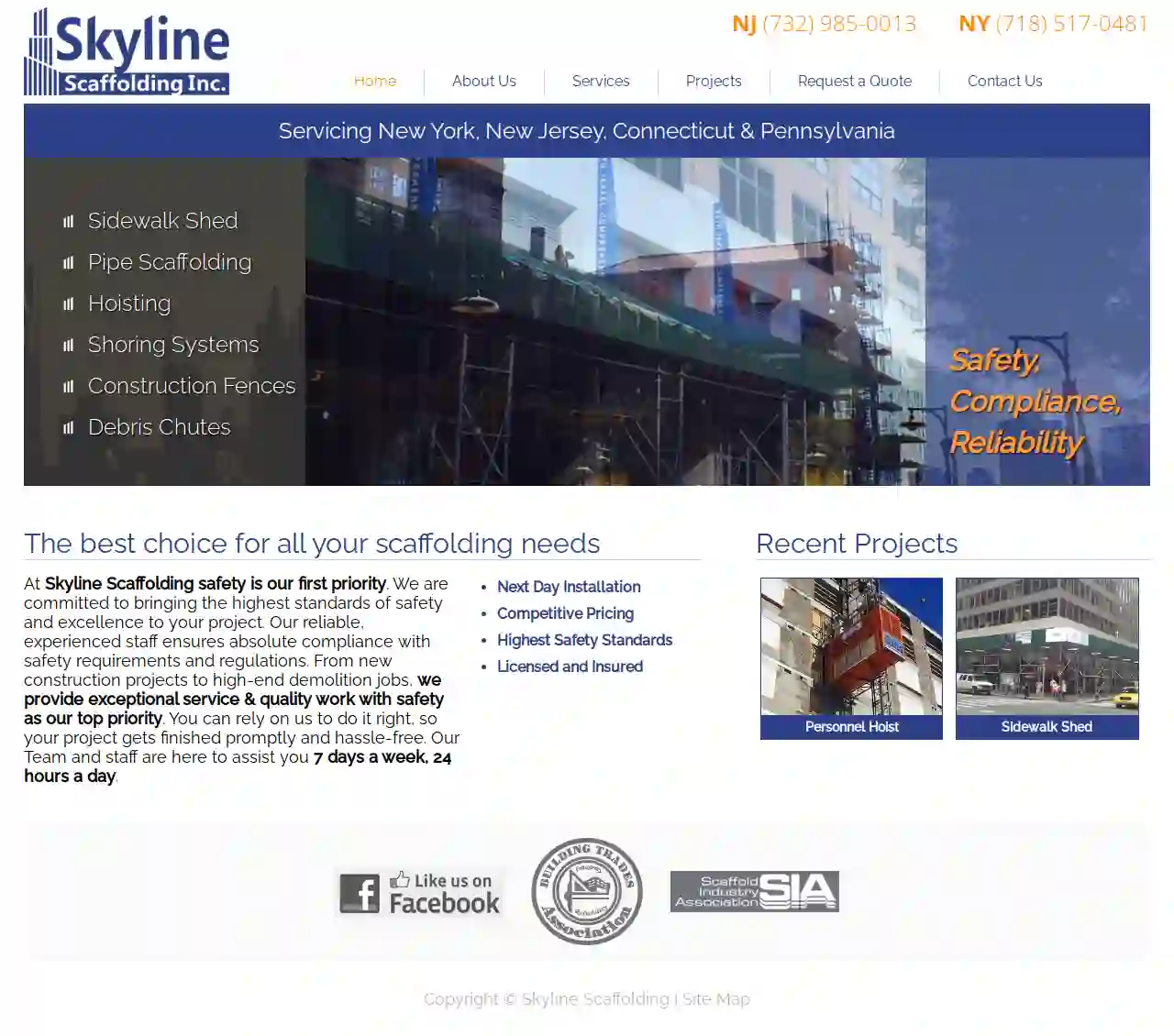
Skyline Scaffolding Group, Inc.
4.49 reviews740 Ramsey Avenue, Hillside, 07205, USAt Skyline Scaffolding, safety is our top priority. We are committed to bringing the highest standards of safety and excellence to your project. Our reliable, experienced staff ensures absolute compliance with safety requirements and regulations. From new construction projects to high-end demolition jobs, we provide exceptional service & quality work with safety as our top priority. We have over 25 years of experience in the field of scaffolding and bring that experience to your project. We are passionate about what we do and look for ways to provide the best possible service to our clients. For our customer’s convenience, we provide all of our services to New York, New Jersey, Pennsylvania, and Connecticut.
- Services
- Why Us?
- Accreditations
- Our Team
- Gallery
Get Quote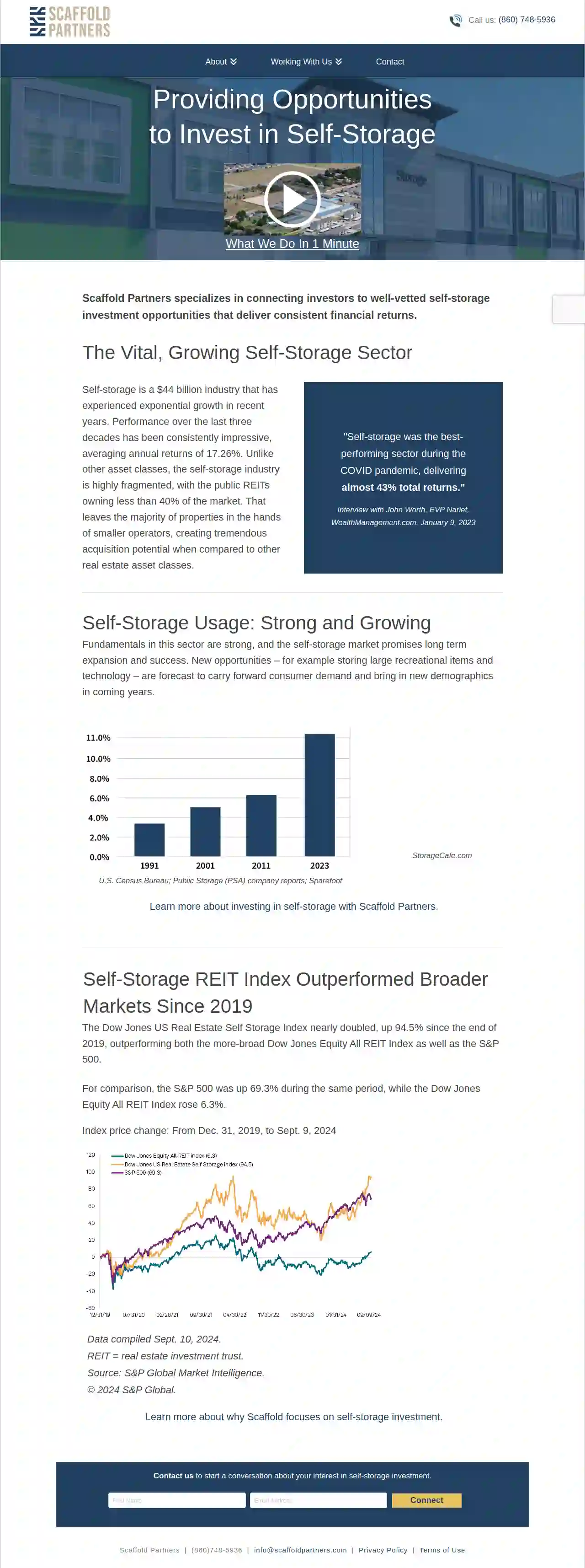
Scaffold Partners
Waterbury, USScaffold Partners specializes in connecting investors to well-vetted self-storage investment opportunities that deliver consistent financial returns. The self-storage industry is a $44 billion industry that has experienced exponential growth in recent years, averaging annual returns of 17.26%. Unlike other asset classes, the self-storage industry is highly fragmented, with the public REITs owning less than 40% of the market. This leaves the majority of properties in the hands of smaller operators, creating tremendous acquisition potential when compared to other real estate asset classes. Fundamentals in this sector are strong, and the self-storage market promises long term expansion and success. New opportunities – for example storing large recreational items and technology – are forecast to carry forward consumer demand and bring in new demographics in coming years.
- Services
- Why Us?
- Accreditations
- Gallery
Get Quote
Yale University
4.5New Haven, CT, Yale University, 06520, USYale University is a world-renowned Ivy League research university located in New Haven, Connecticut. Founded in 1701, Yale is the third-oldest institution of higher education in the United States and has a rich history of academic excellence, innovation, and contributions to society. Yale offers a wide range of undergraduate and graduate programs across various disciplines, including the arts, humanities, sciences, social sciences, and professional schools. The university is known for its rigorous academic standards, distinguished faculty, and vibrant campus life. Yale's commitment to research and scholarship has led to groundbreaking discoveries and advancements in numerous fields. The university has a strong global presence, with alumni and faculty making an impact worldwide. Yale's beautiful campus, located on the banks of the Connecticut River, is a historic and culturally rich environment that fosters intellectual exploration and personal growth.
- Services
- Why Us?
- Gallery
Get Quote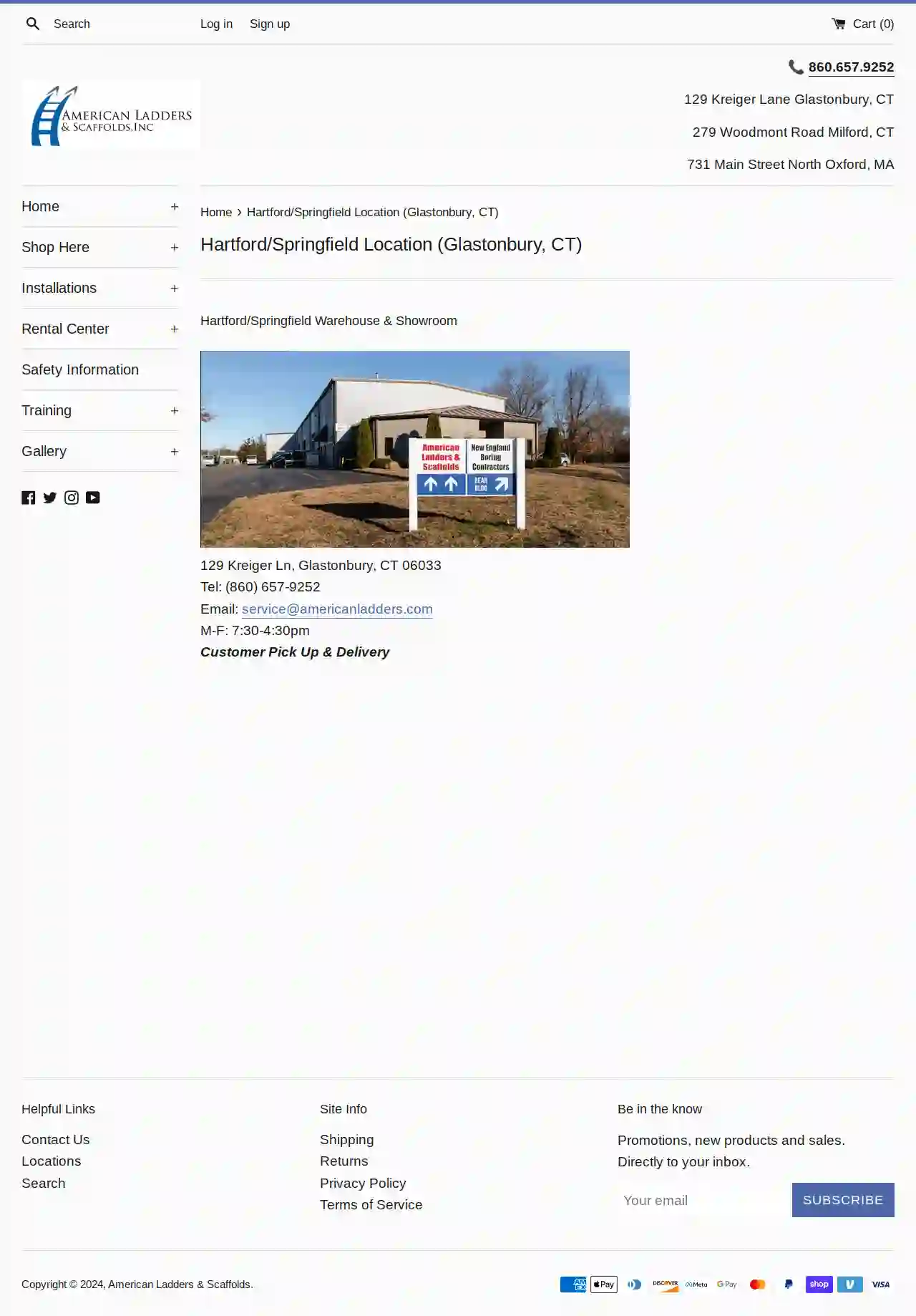
American Ladders & Scaffolds Inc.
4.479 reviewsGlastonbury, CT, 129 Kreiger Lane, 06033, USAmerican Ladders & Scaffolds is a leading provider of ladders, scaffolding, and truck equipment. With multiple locations in Connecticut and Massachusetts, we offer a wide range of products and services to meet the needs of professionals and DIYers alike. Our team of experts is dedicated to providing exceptional customer service, ensuring that our customers have the right tools and equipment to get the job done safely and efficiently.
- Services
- Why Us?
- Accreditations
- Our Team
- Testimonials
- Gallery
Get Quote
Over 2,353+ Scaffolding Businesses onboarded
Our scaffolding contractors operate in Woodbridge & surroundings!
ScaffoldingHQ has curated and vetted the Best Scaffolding Businesses arround Woodbridge. Find the most trustworthy pro today.
Frequently Asked Questions About Scaffolding Rental
- Cost-Effective for Short-Term Projects: Renting is generally more affordable for projects that don't require scaffolding for an extended period.
- No Storage or Maintenance Costs: You don't have to worry about storing or maintaining the scaffolding after your project.
- Access to a Variety of Equipment: Rental companies offer a wide selection of scaffolding types and sizes, allowing you to choose the best fit for your project.
- Long-Term Investment: Buying makes sense if you anticipate frequent scaffolding needs over a long period.
- Customization: You can customize the scaffolding to fit your specific requirements.
- Potential Resale Value: You can potentially resell the scaffolding after you no longer need it.
- Has a single working platform, typically about 60-70cm wide.
- Suitable for tasks where limited space is available.
- Has a wider working platform, usually about 1.3-1.4 meters wide.
- Provides more working space and stability, allowing for movement of materials and multiple workers.
- Base Plates and Adjusters: Use adjustable base plates to level the scaffolding legs on uneven surfaces.
- Ground Preparation: Level the ground as much as possible before erection.
- Bracing and Support: Additional bracing and support may be necessary to compensate for uneven ground conditions.
- Professional Assessment: A qualified scaffolding erector should assess the ground and determine the appropriate measures for safe erection.
- Reputation and Experience: Look for a company with a good track record and a history of satisfied customers.
- Licensing and Insurance: Ensure they have the proper licenses and insurance coverage to protect you from liability.
- Safety Practices: Inquire about their safety policies, training programs, and inspection procedures.
- Equipment Availability and Quality: Confirm they have the type of scaffolding you need and that it's in good condition.
- Pricing and Rental Terms: Compare quotes and assess the rental rates, duration, and any additional fees.
- Customer Service: Choose a company that is responsive, communicative, and helpful.
What is the difference between renting and buying scaffolding?
Renting Scaffolding:
What is the difference between single and double scaffolding?
Single Scaffolding:
Can I use scaffolding on uneven ground?
What are some things to consider when choosing a scaffolding rental company?
What is the difference between renting and buying scaffolding?
Renting Scaffolding:
- Cost-Effective for Short-Term Projects: Renting is generally more affordable for projects that don't require scaffolding for an extended period.
- No Storage or Maintenance Costs: You don't have to worry about storing or maintaining the scaffolding after your project.
- Access to a Variety of Equipment: Rental companies offer a wide selection of scaffolding types and sizes, allowing you to choose the best fit for your project.
- Long-Term Investment: Buying makes sense if you anticipate frequent scaffolding needs over a long period.
- Customization: You can customize the scaffolding to fit your specific requirements.
- Potential Resale Value: You can potentially resell the scaffolding after you no longer need it.
What is the difference between single and double scaffolding?
Single Scaffolding:
- Has a single working platform, typically about 60-70cm wide.
- Suitable for tasks where limited space is available.
- Has a wider working platform, usually about 1.3-1.4 meters wide.
- Provides more working space and stability, allowing for movement of materials and multiple workers.
Can I use scaffolding on uneven ground?
- Base Plates and Adjusters: Use adjustable base plates to level the scaffolding legs on uneven surfaces.
- Ground Preparation: Level the ground as much as possible before erection.
- Bracing and Support: Additional bracing and support may be necessary to compensate for uneven ground conditions.
- Professional Assessment: A qualified scaffolding erector should assess the ground and determine the appropriate measures for safe erection.
What are some things to consider when choosing a scaffolding rental company?
- Reputation and Experience: Look for a company with a good track record and a history of satisfied customers.
- Licensing and Insurance: Ensure they have the proper licenses and insurance coverage to protect you from liability.
- Safety Practices: Inquire about their safety policies, training programs, and inspection procedures.
- Equipment Availability and Quality: Confirm they have the type of scaffolding you need and that it's in good condition.
- Pricing and Rental Terms: Compare quotes and assess the rental rates, duration, and any additional fees.
- Customer Service: Choose a company that is responsive, communicative, and helpful.